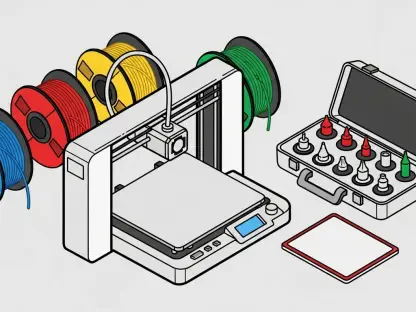The June 2025 Jobs Report reveals a complex narrative in the U.S. labor market, as the Bureau of Labor Statistics outlines a scenario with both promise and concern. Amid an overall increase in nonfarm payroll employment by 147,000 positions, the decline in manufacturing jobs stands out, with the sector shedding 7,000 positions. This downturn is not an isolated incident but a continuation of a troubling pattern over multiple timeframes. Within manufacturing, durable goods manufacturing took a heavier hit with a loss of 5,000 jobs, overshadowing the 2,000 jobs lost in nondurable goods. Certain sub-industries, such as computer and electronic product manufacturing, bore significant losses, intensifying the sector’s challenges. Simultaneously, the unemployment rate witnessed a slight rise to 4.1%, remaining largely stable over the recent months. In contrast, sectors such as private-sector education experienced growth, adding a positive dimension to the employment landscape.
The Struggle Within Manufacturing
Manufacturing has continued to suffer significant setbacks, registering a net loss of 89,000 jobs year-over-year, which dwarfs losses in other sectors like mining and logging. As durable goods manufacturers struggle, they drag the overall performance of manufacturing down, making it a central focus for policymakers and industry leaders alike. Despite governmental efforts and initiatives designed to boost domestic manufacturing, the challenges have proven resilient. Job losses in areas like computer and electronic product manufacturing are particularly concerning, casting a shadow over potential innovation and technological advancement. As such, this persistent decline in manufacturing represents a structural challenge that necessitates a strategic, long-term response. With wages in manufacturing lagging behind the private sector average, a call for comprehensive reforms to support this sector has gained traction among industry experts and labor advocates.
Broader Economic Implications and Political Response
Although the manufacturing sector has struggled, Secretary of Labor Chavez-DeRemer praised the overall employment growth, linking these positive trends to President Trump’s “America First” agenda. This viewpoint reflects the wider economic optimism as various sectors flourish, creating job opportunities. However, the decline in manufacturing juxtaposed with total job growth reveals a stark economic disparity deserving the focus of policymakers and economists alike. With manufacturing wages at $35.19 per hour, they remain below the average for the entire private sector, adding to the sector’s issues. While there was a slight wage uptick in nondurable goods, durable goods experienced a small decline, highlighting the mixed outcomes within the sector. Addressing these wage differences and job losses is crucial moving ahead. Strategies that realign the sector, stimulate innovation, and improve its global competitiveness could redefine the economic landscape. The aim should be to implement solutions fortifying manufacturing, bringing it in line with overall economic growth.









